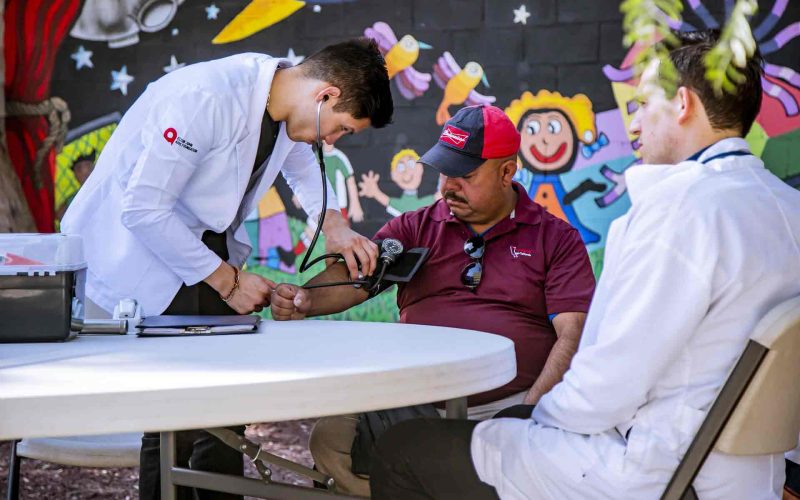Medical Transportation and the Affordable Care Act Enhancing Access to Care

Table of Contents
The Affordable Care Act (ACA), also known as Obamacare, has significantly impacted the healthcare landscape in the United States. While the primary focus of the ACA has been on expanding access to health insurance coverage, it has also played a crucial role in improving transportation options for individuals in need of medical care.
This article explores the relationship between medical transportation and the Affordable Care Act, highlighting its impact on patient access to healthcare services.

Understanding Medical Transportation
Medical transportation refers to the provision of transportation services to individuals who require assistance in reaching healthcare facilities for medical appointments, treatments, or consultations. It plays a vital role in ensuring equitable access to healthcare for individuals with limited mobility, disabilities, or lack of personal transportation.
Challenges in Accessing Medical Transportation
Before the implementation of the Affordable Care Act, many individuals faced significant challenges in accessing medical transportation. Limited transportation options, high costs, and lack of coordination between healthcare providers and transportation services created barriers to care.
These barriers disproportionately affected vulnerable populations, such as low-income individuals, seniors, and individuals with disabilities.
Medicaid Expansion and Medical Transportation
One of the key provisions of the Affordable Care Act was the expansion of Medicaid, a joint federal and state program that provides health insurance to low-income individuals. Medicaid expansion played a crucial role in improving access to medical transportation for eligible beneficiaries.
Under the ACA, states were given the option to expand Medicaid eligibility, resulting in increased coverage and access to transportation services for millions of individuals.
Related Posts
NEMT Services under the ACA
Non-Emergency Medical Transportation (NEMT) services have been a significant focus of the Affordable Care Act. NEMT services provide transportation to medical appointments for individuals who do not require emergency care.
The ACA mandated that states offer NEMT services to Medicaid beneficiaries, ensuring that individuals have the means to reach healthcare facilities for essential care, preventive services, and chronic disease management.
Benefits of Medicare Transportation to Doctor
The Affordable Care Act also brought about changes to Medicare, the federal health insurance program for seniors and individuals with disabilities. While Medicare does not typically cover transportation to routine doctor appointments, certain exceptions exist, including Medicare transportation to doctor services. For instance, Medicare Part B covers limited ambulance transportation in specific situations when other means of transportation would endanger the patient’s health.
Coordinated Care and Transportation
The ACA emphasized the importance of coordinated care, encouraging healthcare providers to work collaboratively and ensure comprehensive, patient-centered care. This approach also extends to medical transportation, as coordinated care networks can help facilitate transportation arrangements for patients. By integrating transportation services into the care continuum, healthcare providers can better address the needs of patients who require assistance in reaching medical appointments.
State Innovations in Medical Transportation
While the ACA set the foundation for improving medical transportation, states have played a crucial role in implementing innovative solutions. Many states have developed partnerships with ride-sharing companies, public transportation systems, and local community organizations to enhance transportation options for individuals in need of medical care. These initiatives have led to increased efficiency, reduced costs, and improved patient experiences.
Conclusion
The Affordable Care Act has played a significant role in addressing the barriers to medical transportation and enhancing access to healthcare services. By expanding Medicaid, mandating NEMT services, and promoting coordinated care, the ACA has paved the way for improved transportation options for vulnerable populations.
While challenges still exist, ongoing innovations and collaborations at the state and local levels continue to strengthen the connection between medical transportation and the Affordable Care Act. Moving forward, it is crucial to prioritize the integration of transportation services into the broader healthcare system, ensuring that individuals can access the care they need, regardless of their transportation limitations.
What are some additional steps that you believe can be taken to further enhance medical transportation and access to care for individuals in need? How can technology and community collaborations contribute to addressing transportation barriers in healthcare? Share your thoughts and ideas on how we can continue improving the connection between medical transportation and the Affordable Care Act to ensure equitable access to healthcare services for all.
Disclaimer: We're not offering any medical advice here. These ideas are for educational and entertainment purposes only. Always seek a professional medical opinion from a physician of your choosing before making any medical decision. The information provided here is not intended to be a substitute to the advice given by your physician or another healthcare professional.
Disclaimer: Though the views expressed are of the author’s own, this article has been checked for its authenticity of information and resource links provided for a better and deeper understanding of the subject matter. However, you're suggested to make your diligent research and consult subject experts to decide what is best for you. If you spot any factual errors, spelling, or grammatical mistakes in the article, please report at [email protected]. Thanks.















Fantastic read! The intersection of medical transportation and the Affordable Care Act is such a vital yet often overlooked aspect of healthcare access. Your article brilliantly highlights how this synergy enhances overall care accessibility. It’s heartening to see a focus on inclusivity in healthcare discussions. Kudos for shedding light on this crucial link between transportation and better healthcare outcomes!